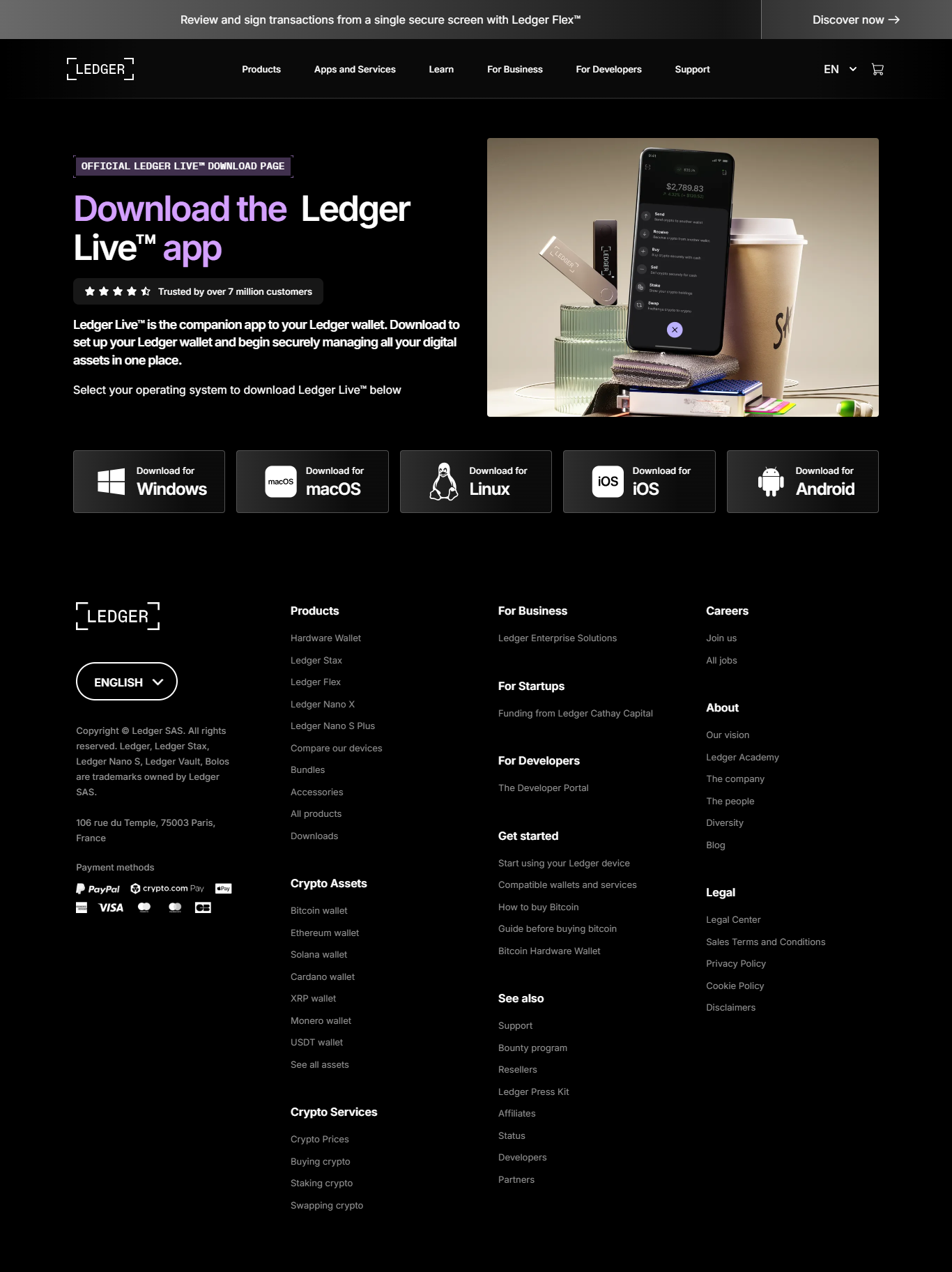Getting Started with Ledger® – Secure Your Digital Assets

In the fast-growing world of cryptocurrencies, security is the number one concern for investors and traders. With millions of users worldwide, Ledger® hardware wallets have established themselves as one of the most trusted solutions for safeguarding digital assets. If you are new to Ledger and want a complete step-by-step guide to getting started, this article will walk you through everything you need to know — from setup to daily usage.
Why Choose Ledger®?
Unlike exchanges or online wallets that can be vulnerable to hacking, Ledger® devices allow you to store your cryptocurrencies offline in a secure, tamper-resistant environment. This method of storage is known as cold storage. By keeping your private keys isolated from the internet, Ledger® ensures that even if your computer or smartphone is compromised, your assets remain safe.
- Industry-leading security with certified secure chips
- Support for 5,000+ cryptocurrencies and tokens
- Seamless integration with Ledger Live software
- Easy backup and recovery options
- User-friendly design for beginners and experts alike
Step 1: Unboxing Your Ledger® Device
When you first receive your Ledger Nano X or Nano S Plus, check that the package is sealed and untampered. Inside the box, you will find:
- The Ledger® device itself
- A USB cable
- Recovery sheets for writing down your 24-word seed phrase
- Instruction manual and accessories
Step 2: Initial Setup
To begin, connect your Ledger® device to your computer or smartphone. You’ll be guided to install Ledger Live, the official companion application. Ledger Live is available for both desktop and mobile, allowing you to manage your crypto portfolio in one place.
Follow the prompts on the device screen to create a new wallet or restore an existing one. If you are creating a new wallet, you’ll receive a unique 24-word recovery phrase. Write this down carefully and store it offline. This phrase is the master key to your funds — never share it with anyone.
Step 3: Understanding the Recovery Phrase
The recovery phrase is perhaps the most critical part of your setup. Losing access to your Ledger® without the recovery phrase means losing access to your funds permanently. Treat it like a physical vault combination. Do not take a photo, do not store it on cloud storage, and do not share it with anyone, no matter what.
Step 4: Installing Apps & Managing Crypto
Ledger® supports a wide range of cryptocurrencies. To manage a specific coin, you’ll need to install its corresponding app on your Ledger® device via Ledger Live. For example, to manage Bitcoin, install the Bitcoin app; for Ethereum, install the Ethereum app, and so on.
Once installed, you can create accounts, send and receive funds, and track balances — all through Ledger Live, while your private keys remain locked safely inside your hardware wallet.
Step 5: Sending & Receiving Crypto
To receive crypto, generate an address in Ledger Live and verify it on your device screen. Always double-check the address displayed on your Ledger® device to ensure it matches what you see on your computer or phone.
When sending funds, you’ll be prompted to confirm the transaction on your device. This ensures that no malicious software can alter the details without your approval.
Step 6: Regular Security Practices
To keep your assets safe, consider the following best practices:
- Always download Ledger Live from the official Ledger® website.
- Enable a strong PIN code for your device.
- Keep your recovery phrase stored securely offline.
- Update your Ledger® firmware regularly to benefit from the latest security improvements.
Advanced Features of Ledger®
Beyond storing crypto, Ledger® also allows you to interact with DeFi (Decentralized Finance), NFTs, and Web3 applications in a secure way. By connecting your device to Ledger Live or third-party apps like MetaMask, you can access decentralized exchanges, lending platforms, and NFT marketplaces while keeping your private keys offline.
Why Ledger Live Matters
Ledger Live is more than just a wallet interface. It’s a complete crypto management platform that allows you to:
- Buy crypto directly with fiat currency
- Swap one crypto for another securely
- Stake certain coins to earn rewards
- Monitor portfolio performance in real time
Troubleshooting & Support
If you encounter issues during setup or while using your Ledger®, consult the Ledger Help Center or the Ledger Academy. These resources provide tutorials, FAQs, and step-by-step troubleshooting guides. Ledger’s customer support team is also available to assist with more complex problems.
Conclusion
Getting started with Ledger® is one of the most important steps you can take to protect your cryptocurrency holdings. By moving your assets off exchanges and into a secure hardware wallet, you gain peace of mind knowing that your funds are protected against online threats. With Ledger Live, managing your portfolio becomes intuitive, convenient, and most importantly, safe.
Final Tip: Think of your Ledger® as your personal bank vault. Once you have secured your recovery phrase and set up your device, you can confidently explore the world of crypto without fear of losing your investments to hacks or scams.